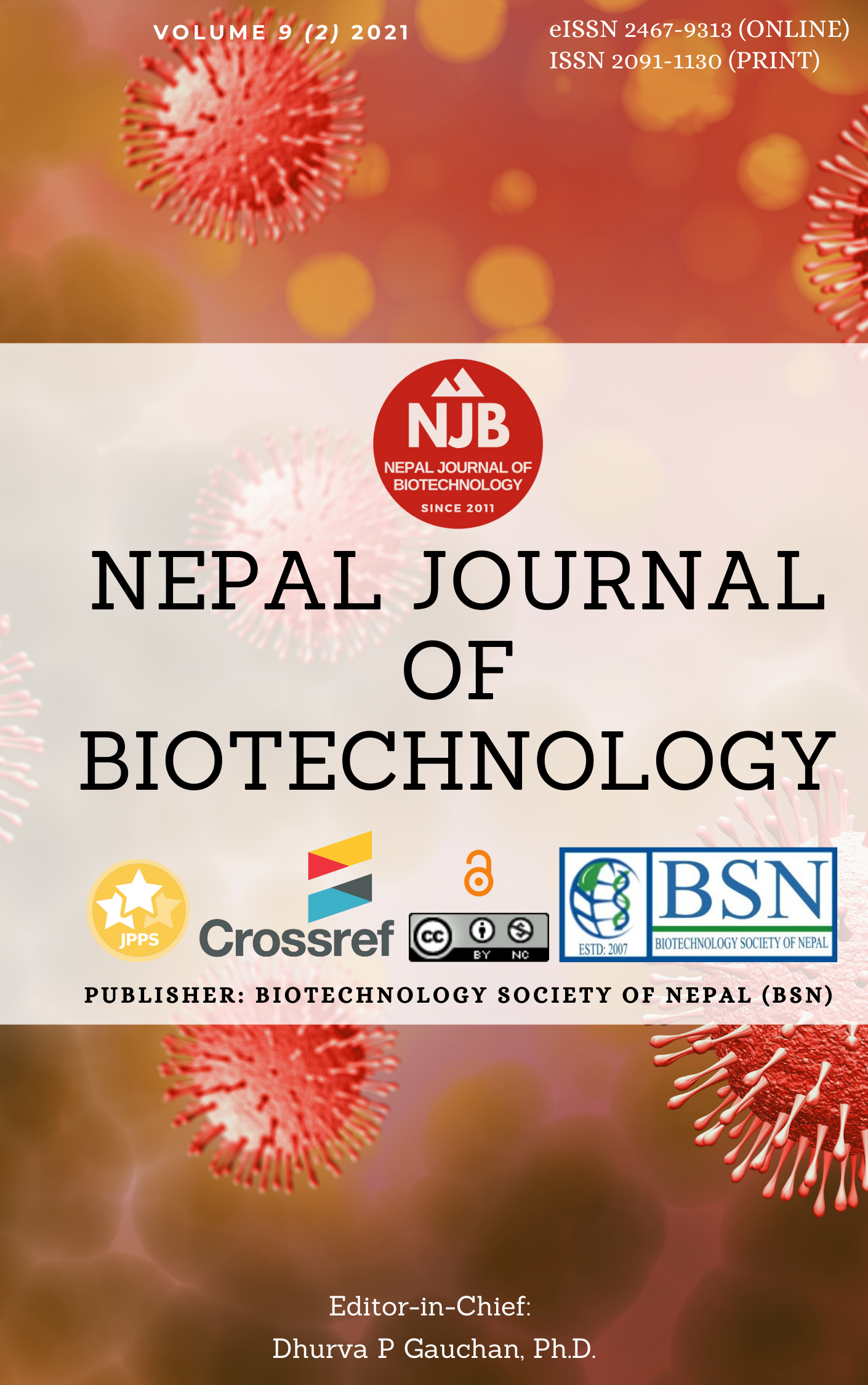Sero-prevalance of Cryptococcal Antigenemia in HIV Positive Individual having CD4 Counts <100 Cells/mm3
Keywords:
CD4, CrAg, Cryptococcosis, HIV, AIDS, Lateral Flow assayAbstract
Cryptococcus neoformans is one of the foremost common opportunistic infectious agents in people living with Acquired Immuno Deficiency Syndrome (AIDS). It has been reported to cause about 1 million cases of cryptococcal meningitis per year among HIV/AIDS and 600,000 deaths annually. This study was done to find the prevalence of Cryptococcal antigenemia among HIV positive individuals having CD4counts <100 cells/mm3. A cross-sectional study was conducted in the HIV Reference unit, National public health laboratory from July to December 2015. The study comprised of 99 HIV positive individuals having CD4counts <100 cells/mm3. CD4 T cell count was performed by flow cytometry (BD Biosciences, San Jose, CA, USA) and Cryptococcal antigen test by Latex agglutination assay. The overall prevalence of cryptococcal antigenemia was found to be 18.2%. Of the total ninety-nine subjects enrolled in the study, 72 (72.8%) were males and 27 (27.2%) were females. The mean age of the patients was 38 years ranging from 13 to 69 years. Higher percentage of female (22.2%) showed Cryptococcal infection in our study as compared to male (16.7%). The study concludes higher prevalence of Cryptococcal antigenemia among HIV infected individuals and recommends Cryptococcal antigen screening to be made mandatory in HIV positive patients having CD4 T cells count below 100/μl.
Downloads
Downloads
Published
How to Cite
Issue
Section
License
Copyright (c) 2021 Biotechnology Society of Nepal

This work is licensed under a Creative Commons Attribution-NonCommercial 4.0 International License.
Copyright Notice:
The manuscript submitted to NJB must be an original contribution, not previously published and should not be under consideration for publication elsewhere. When the manuscript is accepted for publication, the authors agree to automatically transfer the copyright of the article to the publisher. It should grant permission to any third party, in advance and in perpetuity, the right to use, reproduce or disseminate your article, according to the NJB copyright and license agreement.
Authors transfer copyright to the publisher as part of a journal publishing agreement but have the rights to: Share their article for Personal Use, Internal Institutional Use and Scholarly Sharing purposes, with the NJB applies the Creative Commons Attribution-NonCommercial CC BY-NC license to all the works we publish after Jun 2020 (Before it was CC BY-NC-ND). Under this license, authors agree to make articles legally available for reuse, without permission or fees, for virtually any non-commercial purpose. Anyone may remix, adapt, and build upon your work non-commercially, and although their new works must also acknowledge you and be non-commercial, they don’t have to license their derivative works on the same terms. More details on CC BY-NC refer to its Licence Deed and Legal Code.






